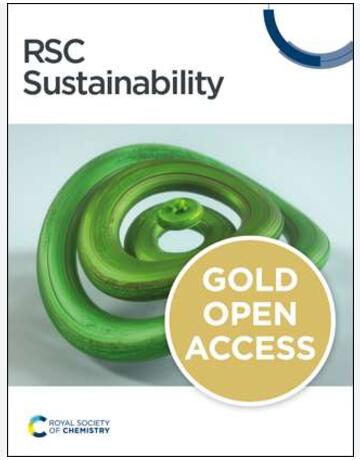Integrating Technological Environmental Design and Energy Interventions in the Residential Building Stock: The Pilot Case of the Small Island Procida
IF 3.3
3区 环境科学与生态学
Q2 ENVIRONMENTAL SCIENCES
引用次数: 0
Abstract
The next decade will see severe environmental and technological risks, pushing our adaptive capacity to its limits. The EPBD Case Green directive, to counter this phenomenon, emphasizes accelerating building renovations, reducing GHG emissions and energy consumption, and promoting renewable energy installations. Additionally, it calls for deadlines to phase out fossil fuels and mandates solar system installations. This research provides a comprehensive perspective on the opportunities for and challenges of incorporating renewable energy into the built environment. It focuses on the 2961 residential buildings on Procida, a small island located south of Italy, to efficiently utilize energy resources and lay the groundwork for sustainability. Beginning with an analysis of the territorial, urban, historical–conservation, structural, and geological context, in addition to environmental assessments, the research develops a classification and archetypalization system using in-house software. This system aggregates data on the island’s residential buildings, analyzes their current state, and formulates various intervention scenarios. These scenarios demonstrate how integrating technological–environmental design interventions, such as upgrading the building envelope and enhancing bioclimatic behavior, with energy retrofitting measures, such as replacing mechanical systems and installing solar panels, can improve the overall performance of the existing building stock and achieve energy self-sufficiency.在住宅建筑中整合技术环境设计和能源干预措施:普罗奇达小岛的试点案例
未来十年将面临严重的环境和技术风险,使我们的适应能力达到极限。为应对这一现象,EPBD 案例绿色指令强调加快建筑翻新,减少温室气体排放和能源消耗,并促进可再生能源的安装。此外,它还要求限期淘汰化石燃料,并强制安装太阳能系统。这项研究从一个全面的角度探讨了将可再生能源纳入建筑环境的机遇和挑战。研究重点关注意大利南部小岛普罗奇达(Procida)上的 2961 栋住宅楼,以有效利用能源资源,为可持续发展奠定基础。除环境评估外,研究还从对地域、城市、历史保护、结构和地质背景的分析入手,利用内部软件开发了一个分类和原型化系统。该系统汇总了岛上住宅建筑的数据,分析了它们的现状,并制定了各种干预方案。这些方案展示了如何将技术环境设计干预措施(如升级建筑围护结构和增强生物气候行为)与能源改造措施(如更换机械系统和安装太阳能电池板)相结合,从而提高现有建筑的整体性能,实现能源自给自足。
本文章由计算机程序翻译,如有差异,请以英文原文为准。
求助全文
约1分钟内获得全文
求助全文
来源期刊

Sustainability
ENVIRONMENTAL SCIENCES-ENVIRONMENTAL SCIENCES
CiteScore
6.80
自引率
20.50%
发文量
14120
审稿时长
17.72 days
期刊介绍:
Sustainability (ISSN 2071-1050) is an international and cross-disciplinary scholarly, open access journal of environmental, cultural, economic and social sustainability of human beings, which provides an advanced forum for studies related to sustainability and sustainable development. It publishes reviews, regular research papers, communications and short notes, and there is no restriction on the length of the papers. Our aim is to encourage scientists to publish their experimental and theoretical research relating to natural sciences, social sciences and humanities in as much detail as possible in order to promote scientific predictions and impact assessments of global change and development. Full experimental and methodical details must be provided so that the results can be reproduced.
 求助内容:
求助内容: 应助结果提醒方式:
应助结果提醒方式:


